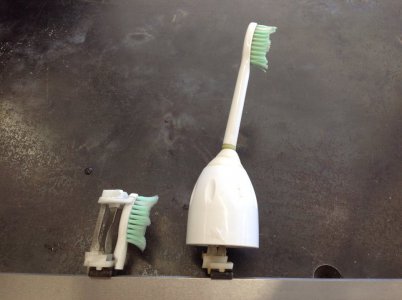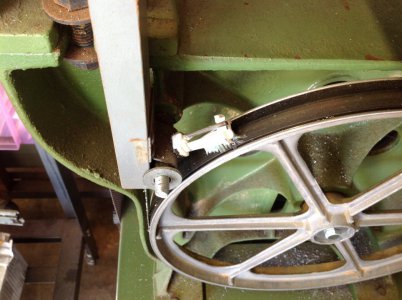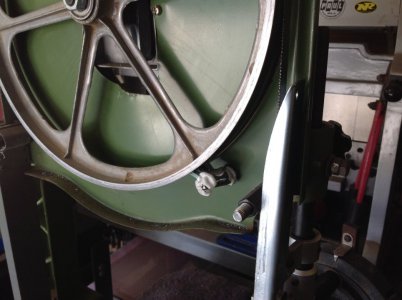Well all I can say to that is you're missing out on one of the more exhilarating moments a person can have in the shop!

Seriously, I've broken my share of blades but not from horsing the cut or doing something goofy. Way back when, I used to do a lot of freehand cutting of custom signs and the individual numbers and letters to build the signs. Think inside of a hotel lobby or bank where the shiny brass or aluminum letters direct you to the concierge or whatever. Anyhow, I did a lot of time in front of the vertical bandsaw (originally a 14" wood cutting saw converted down-speeded to cut non ferrous metals) cutting them out before filing and finishing for delivery. My blades were always good quality, either made by the local saw shop or bought straight from DoAll when they still had a storefront in our city. And after a period of time (I really don't know how long in cutting hours that might have been) I would start to hear a little "tick" as the blade went round. And gradually the "tick" got a bit louder and just a bit louder until I'd think to myself "huh, this blade is starting to make a funny noise...". And if I had made it to that stage it usually meant about two more minutes before she'd let go...
Wham! The saw frame would jump from the sudden release of tension, I'd jump even higher than the saw from the sudden explosion about ten inches from my ear, and then the broken blade end would come spooling out the top wheel cover usually right around where my right hand would be.
I don't think I ever got cut, if I did it was very minor, as the blade had nothing but its own inertia behind it at that point so couldn't really damage too much. Sure scared the k-rap out of me every time though.
Looking back I suspect it was a combination of things that led to the demise. Hours of cutting for sure, but also a buildup of chips beneath the blade that would embed into the rubber tires (remember, converted wood saw) which probably created a slightly lumpy ride. Every now and again I'd scrape the tires but you know how it is, when you're on the clock for piecework there's rarely time for housekeeping matters. It was just something I came to expect the older the blade got, but that said I still have some of them on the rack years later that have yet to give up the ghost. All I really know is, one day when I least expect it.... Wham!
-frank



